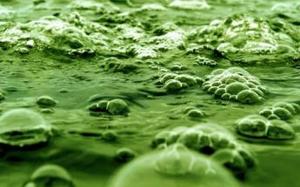EnergyAlgae could become an important source of fuel in U.S.
A new analysis shows that the U.S. land and water resources could likely support the growth of enough algae to produce up to twenty-five billion gallons of algae-based fuel a year in the United States, one-twelfth of the country’s yearly needs.

Algae may be the source of a portion of U.S. fuel needs // Source: ba7r.org
A new analysis shows that the U.S. land and water resources could likely support the growth of enough algae to produce up to twenty-five billion gallons of algae-based fuel a year in the United States, one-twelfth of the country’s yearly needs.
The findings come from an in-depth look at the water resources that would be needed to grow significant amounts of algae in large, specially built shallow ponds. A PNNL release reports that the results were published in the 7 May issue of Environmental Science and Technology, published by the American Chemical Society.
“While there are many details still to be worked out, we don’t see water issues as a deal breaker for the development of an algae biofuels industry in many areas of the country,” said first author Erik Venteris of the Department of Energy’s Pacific Northwest National Laboratory (PNNL).
For the best places to produce algae for fuel, think hot, humid and wet. Especially promising are the Gulf Coast and the Southeastern seaboard.
“The Gulf Coast offers a good combination of warm temperatures, low evaporation, access to an abundance of water, and plenty of fuel-processing facilities,” said hydrologist Mark Wigmosta, the leader of the team that did the analysis.
Wooing algae as fuel
Algae, it turns out, are plump with oil, and several research teams and companies are pursuing ways to improve the creation of biofuels based on algae — growing algae composed of more oil, creating algae that live longer and thrive in cooler temperatures, or devising new ways to separate out the useful oil from the rest of the algae.
First, however, the algae must grow. The chief requirements are sunlight and water. Antagonists include clouds, a shortage of water, and evaporation.
A previous report by the same team looked mainly at how much demand algae farms would create for freshwater.
That report demonstrated that oil based on algae have the potential to replace a significant portion of the nation’s oil imports and drew the attention of President Obama.
The release notes that the new report focuses on actual water supplies and looks at a range of possible sources of water, including fresh groundwater, salty or saline groundwater, and seawater. The team estimates that up to twenty-five billion gallons of algal oil could be produced annually, an increase of four billion gallons over the previous study’s estimate. The new amount is enough to fill the nation’s current oil needs for one
